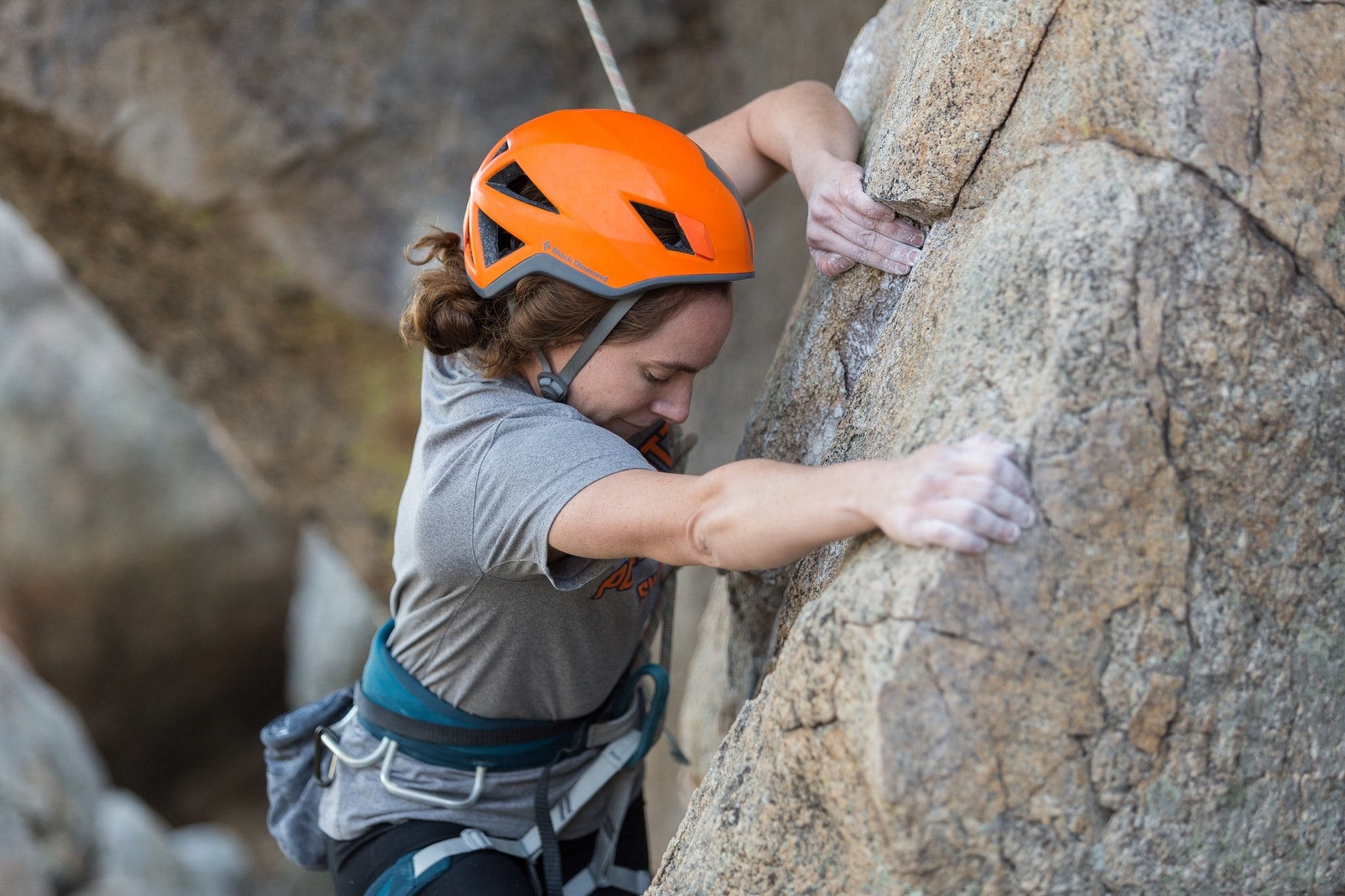The following content is pulled from our 80+ page eBook, Rock Climbing Fundamentals.
A mindset to maintain during your early climbing days is to focus on getting better, not stronger. While strength (and strength-to-weight ratio) is an important factor in climbing, solid technique will build a foundation for your climbing that will take you far beyond what can be achieved by just getting strong. Utilizing proper technique first will make you more efficient and controlled; a better climber and in the end, a stronger climber.
As follows are 3 basic techniques to master; doing so will drastically improve your performance.
Maintain relaxed, straight arms
With sweat dripping and bent, strained arms clenching, the unnaturally strong gym-rat-turned-rock-climber falls off in exhaustion after his 5th unnecessarily powerful movement of the short boulder problem.
Climb at any gym and you’ll see the above happen. While it may be humorous when you see this performance backed by a large ego, it points to a very simple mistake in technique: over-gripping and over-straining.
As much as possible, you want to maintain long, relaxed arms while climbing. It feels counterintuitive because flexed arms seemingly provide a more powerful grip, but this leads to quick exhaustion and fatigue. So, any time you catch yourself with bent arms, pause, take a breath and relax into a straight-armed position.
Demonstration of climbing with straight arms:
Correct breathing habits will allow for greater relaxation. Learn more in our article: How to Breathe: Techniques for Rock Climbing.
Utilize proper hip technique
A general rule of thumb is this: whichever hand you’re reaching with, position that hip against the wall.
If you walk to a wall in the room right now (try it out!) position your right leg, right hip, and right arm against the wall. Now reach to the sky with your right arm. Note how far up the wall the tips of your fingers are.
Now, from the exact same body position, drop your right arm and try to reach the same height with your left hand. As you can see, when reaching over your body in this manner (reaching left arm with right hip against the wall) you get far less extension. The same applies when climbing. For greater extension and more natural movement, turn the hip of the hand you’re reaching with into the wall.
Feet first, hands second
It’s common practice for new climbers to just look up, with feet being an afterthought. However, only looking for the next handhold will often result in losing sight of the most efficient position, making the moves harder and draining your stamina faster.
Try this: before each time you move a hand, ask yourself:
Are my feet in the most ideal position to make this a fluid and natural movement?
At first, you may not know the answer, but as you learn more about your body and its movement, you will naturally be able to ensure that your positioning is correct prior to moving each hand. If you find this challenging at first, don’t be turned off; above all, it’s an awareness exercise that will drastically aid in your proprioception.
Demonstration of proper footwork technique:
Quickly improve your footwork by reading our feature about this trick: silent feet.
Interested in more content crafted for beginners? Check out our, 80+ page eBook, Rock Climbing Fundamentals: Essential Terms, Techniques, and Tips for the New Climber.
If you liked this article, we think you’ll also enjoy:
- Gear Guide: Best Equipment for Beginner Climbers
- Climbing for Beginners: Spotting for Bouldering
- Pull-Up Progression for Climbers
- 25 Best Books for Climbers
- Looking Back After One Year of Climbing — 10 Lessons Learned
Lastly, don’t forget to check out our most popular articles ever published, free rock climbing eBooks, and the internet’s best climbing gear sales.








